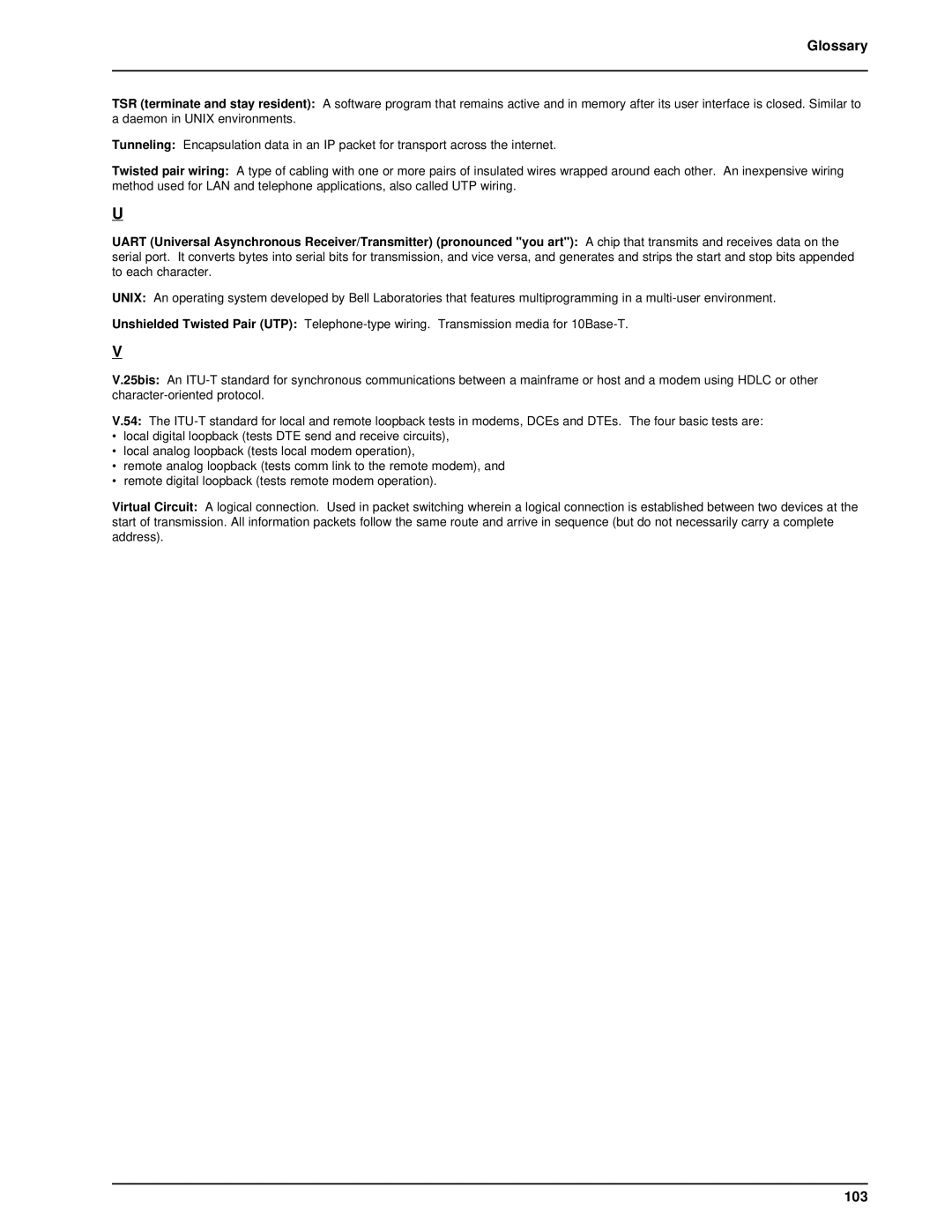
Glossary
TSR (terminate and stay resident): A software program that remains active and in memory after its user interface is closed. Similar to a daemon in UNIX environments.
Tunneling: Encapsulation data in an IP packet for transport across the internet.
Twisted pair wiring: A type of cabling with one or more pairs of insulated wires wrapped around each other. An inexpensive wiring method used for LAN and telephone applications, also called UTP wiring.
U
UART (Universal Asynchronous Receiver/Transmitter) (pronounced "you art"): A chip that transmits and receives data on the serial port. It converts bytes into serial bits for transmission, and vice versa, and generates and strips the start and stop bits appended to each character.
UNIX: An operating system developed by Bell Laboratories that features multiprogramming in a
Unshielded Twisted Pair (UTP):
V
V.25bis: An
V.54: The
•local digital loopback (tests DTE send and receive circuits),
•local analog loopback (tests local modem operation),
•remote analog loopback (tests comm link to the remote modem), and
•remote digital loopback (tests remote modem operation).
Virtual Circuit: A logical connection. Used in packet switching wherein a logical connection is established between two devices at the start of transmission. All information packets follow the same route and arrive in sequence (but do not necessarily carry a complete address).
